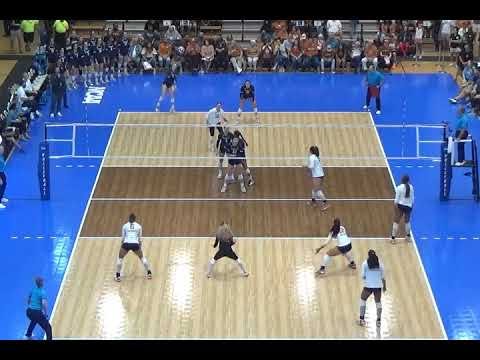And then there were 4! This NCAA tournament has been incredible so far. As one friend put it:
Unfortunately, I wasn’t able to watch any of it live! I was running a private clinic for a club. The good news is (1) this gives me a chance to plug the public Offensive Concepts event this weeked in Wilmington, DE and (2) I’ve been able to catch up on the always-wonderful Volleymetrics machine.
Also, as this friend notes, I’ve been fortunate to have coaches from all the Final Four teams on SmarterVolley for coaching workshops!
Dave co-hosted our Q&A with Marv.
Alfee on Defensive Training
DBK on Setting
And… unfortunately Dan Fisher’s session isn’t available. Blame early-2020 understanding of how Zoom works.
So the lesson clearly is: become a premium subscriber to Smarter Volley and you too can learn how to coach exactly as good as any of these coaches in the Final Four. It works EXACTLY like that.
And speaking of the Final Four, I’ll spend some time before these matches looking at each of the teams and breaking down some of their profiles and what I would do if I was faced with the tough task of trying to beat any of them.
If you want to see the profiles from the other 3 teams, I’ll link them here as I release them.
Texas
Triangle Profile
I’m using the Public Triangles method for this, which is a billion times faster than downloading dvw files from every match for each of these 4 teams, and sometimes the default dvw pulls from VM can miss a point or two here or there. But it’s all going to be pretty darn close, especially when we’re looking at a full season’s worth of data.
So, what are my initial thoughts?
First: Texas is really really good. Next: So are the other teams in Final Four. But… Texas has been a bit more dominant than the other 3 teams. There’s a reason they are ranked #1. And in sum, they’re statistically better than any team was last year as well. Toppling them will be a tall task. Let’s look at the share of the game that each team plays in each phase:
Something interesting here is that Texas is a very high-Terminal Serving team. Last year, they led the Power 5 in both Service Aces and Service Errors, meaning they put relatively fewer balls into play than any other team. They are high in this category again this year, but, as we’ll see, this is mostly dragged up by one server; most of their team is more conventional in terms of risk:reward.
Is this a good thing? It’s hard to argue with success. I noted last year that, if you judged things purely in a vacuum, that level of serving aggression might not be ideal for a team as good at the net as Texas.
But… serving tough makes you better at the net. Last year they led the Power 5 in “Opponent GP%” which means they dealt with less opponent In-System offense than any other team1. They are outstanding in that area again. It’s hard to pass In-System against Texas and it’s really hard to win rallies against them when you pass Out-of-System.
Let’s look at the % of each phase of the game that the Final 4 teams have won:
I saved Texas for last, because the statistics on them aren’t quite as interesting… because they’ve been so good. Each phase of their game is near or better than any other team’s strength. Pitt has dominated the Terminal Serving phase, but Texas has been almost as good. Louisville has dominated First Ball, but Texas has been a little better. USD has been great in Transition, but Texas has been a little better.
The Vegas lines I could find have Texas at 80% probability of winning, a pretty startling figure for a Final 4 match. It’s tough to argue with that. They’ve been great.
But… there’s always that 20%. So, if we’re trying to pull an upset on Texas, how do we do it?
1. 5-to-5 and 1-to-1
Texas has been very good In-System, but they really shine in Medium Pass.
Texas has been a solid passing team. Teams would love to serve Eggleston or Skinner a lot, but Texas doesn’t really give you the chance to do that much. They pinch actively and Fleck takes a lot of court. One thing I noted in the Louisville preview was that teams miss a lot of serves against them. And teams miss a lot of serves against Texas too. I think it’s trap to overserve and feel like you have to step up your service game because Texas is so good offensively.
And now let’s remember that Texas being really good in Medium Pass means you don’t get quite the same payoff for knocking them off the net. So it’s a tricky line to walk. You need to serve tough but you can’t miss a ton. Let’s watch the aces that Texas has given up in the tournament and play what-do-you-see:
I notice how many of them are crosscourt. 1-to-1 when Fleck is in zone 6 and 5-to-5 when she’s in zone 1.
Texas is really active in their pinches and shifts. They know teams are going to target Eggleston and Skinner and are really good at making it hard to to do that. Texas is the most active of any team in the tournament about shifting their serve receives to get the ball to their libero:
Keep reading with a 7-day free trial
Subscribe to Smarter Volley by Joe Trinsey to keep reading this post and get 7 days of free access to the full post archives.








